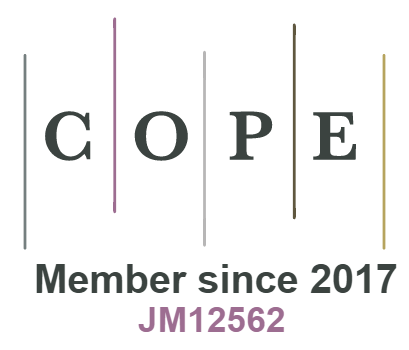Handwritten Bangla Numerical Digit Recognition Using Fine Regulated Deep Neural Network
DOI:
https://doi.org/10.18034/ei.v9i2.551Keywords:
Bangla Handwritten Recognition, OCR, DCNN, TDNN, FRDNNAbstract
The recognition of handwritten Bangla digit is providing significant progress on optical character recognition (OCR). It is a very critical task due to the similar pattern and alignment of handwriting digits. With the progress of modern research on optical character recognition, it is reducing the complexity of the classification task by several methods, a few problems encounter during recognition and wait to be solved with simpler methods. The modern emerging field of artificial intelligence is the Deep Neural Network, which promises a solid solution to these few handwritten recognition problems. This paper proposed a fine regulated deep neural network (FRDNN) for the handwritten numeric character recognition problem that uses convolutional neural network (CNN) models with regularization parameters which makes the model generalized by preventing the overfitting. This paper applied Traditional Deep Neural Network (TDNN) and Fine regulated deep neural network (FRDNN) models with a similar layer experienced on BanglaLekha-Isolated databases and the classification accuracies for the two models were 96.25% and 96.99%, respectively over 100 epochs. The network performance of the FRDNN model on the BanglaLekha-Isolated digit dataset was more robust and accurate than the TDNN model and depend on experimentation. Our proposed method is obtained a good recognition accuracy compared with other existing available methods.
Downloads
References
Ahmed, M., Akhand, M. A. H., & Rahman, M. M. Hafizur. (2019). Recognizing Bangla Handwritten Numeral Utilizing Deep Long Short-Term Memory. Int. J. Image, Graph. Signal Process, 11(1), 23–32.
Arbain, N. A., Azmi, M. S., Muda A. K., Muda, N. A. & Radzid, A. R. (2018). Offline handwritten digit recognition using triangle geometry properties. Int. J. Comput. Inf. Syst. Ind. Manag. Appl., 10(January), 87–97.
Biswas, M., Islam, R., Shom, G. K., Shopon, M., Mohammed, N., Momen, S., Abedin, A. (2017). BanglaLekha-Isolated: A multi-purpose comprehensive dataset of Handwritten Bangla Isolated characters. Data in Brief, 12, 103-107. https://doi.org/10.1016/j.dib.2017.03.035
Das, P., Dasgupta, T. & Bhattacharya, S. (2018). A Bengali handwritten vowels recognition scheme based on the detection of structural anatomy of the characters. Adv. Intell. Syst. Comput., 518(January), 245–252.
Hochuli, A. G., Oliveira, L. S., Britto, A. S., & Sabourin, R. (2018). Handwritten digit segmentation: Is it still necessary? Pattern Recognition, 78, 1–11.
Kamran, S. A., Humayun, A. I., Alam, S., Doha, R. M., Mandal, M. K., Reasat, T., & Rahman, F. (2018). AI Learns to Recognize Bengali Handwritten Digits: Bengali.AI Computer Vision Challenge 2018. https://arxiv.org/abs/1810.04452v1
Pramanik, R., & Bag, S. (2018). Shape decomposition-based handwritten compound character recognition for Bangla OCR. Journal of Visual Communication and Image Representation, Volume 50, 123-134.
Rahman M. M., Akhand, M. A. H., Islam, S., Shill, P. C. (2015). Bangla Handwritten Character Recognition using Convolutional Neural Network. I. J. Image, Graphics and Signal Processing, 8, 42-49.
Ramzan, M., Khan, H. U., Awan, S. M., Akhtar, W., Ilyas, M., Mahmood, A., & Zamir, A. (2018). A survey on using neural network based algorithms for hand written digit recognition. Int. J. Adv. Comput. Sci. Appl., 9(9), 519–528. https://doi.org/10.14569/IJACSA.2018.090965
Shamim, S. M., Miah, M. B. A., Sarker, A., Rana, M., & Jobair, A. (2018). Al. Handwritten digit recognition using machine learning algorithms. Indones. J. Sci. Technol., 3(1), 29–39.
Sharif, S. M. A., & Mahboob, M. (2019). Deep Hog: a Hybrid Model To Classify Bangla Isolated Alpha-Numerical Symbols. Neural Netw. World, 29(3), 111–133.
Thapa, R. & Kumar, D. (2018). Recognizing Digits from Natural Images and handwritten Digits using Deep Convolutional Neural Networks. International Journal of Scientific Research in Computer Science, Engineering and Information Technology (IJSRCSEIT), 4(1), 158-165.
--0--
Downloads
Published
Issue
Section
License
Engineering International is an Open Access journal. Authors who publish with this journal agree to the following terms:
- Authors retain copyright and grant the journal the right of first publication with the work simultaneously licensed under a CC BY-NC 4.0 International License that allows others to share the work with an acknowledgment of the work's authorship and initial publication in this journal.
- Authors are able to enter into separate, additional contractual arrangements for the non-exclusive distribution of the journal's published version of their work (e.g., post it to an institutional repository or publish it in a book), with an acknowledgment of its initial publication in this journal. We require authors to inform us of any instances of re-publication.









